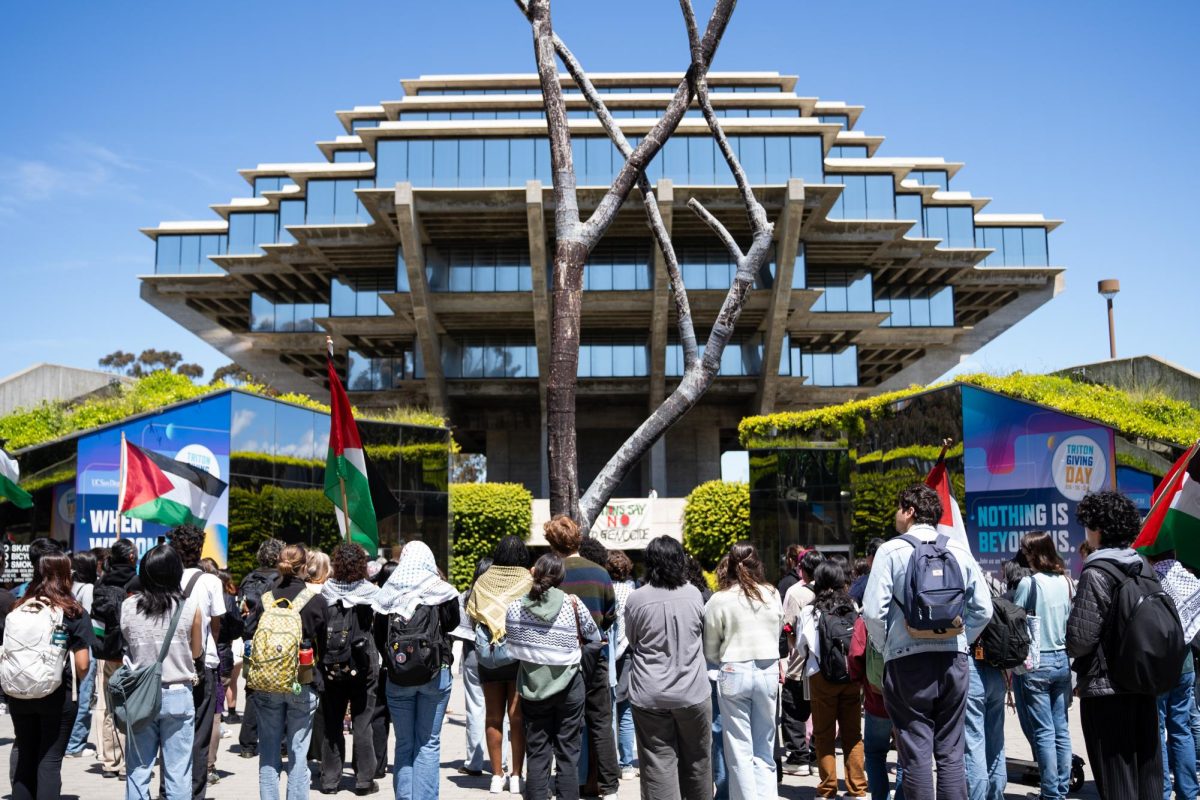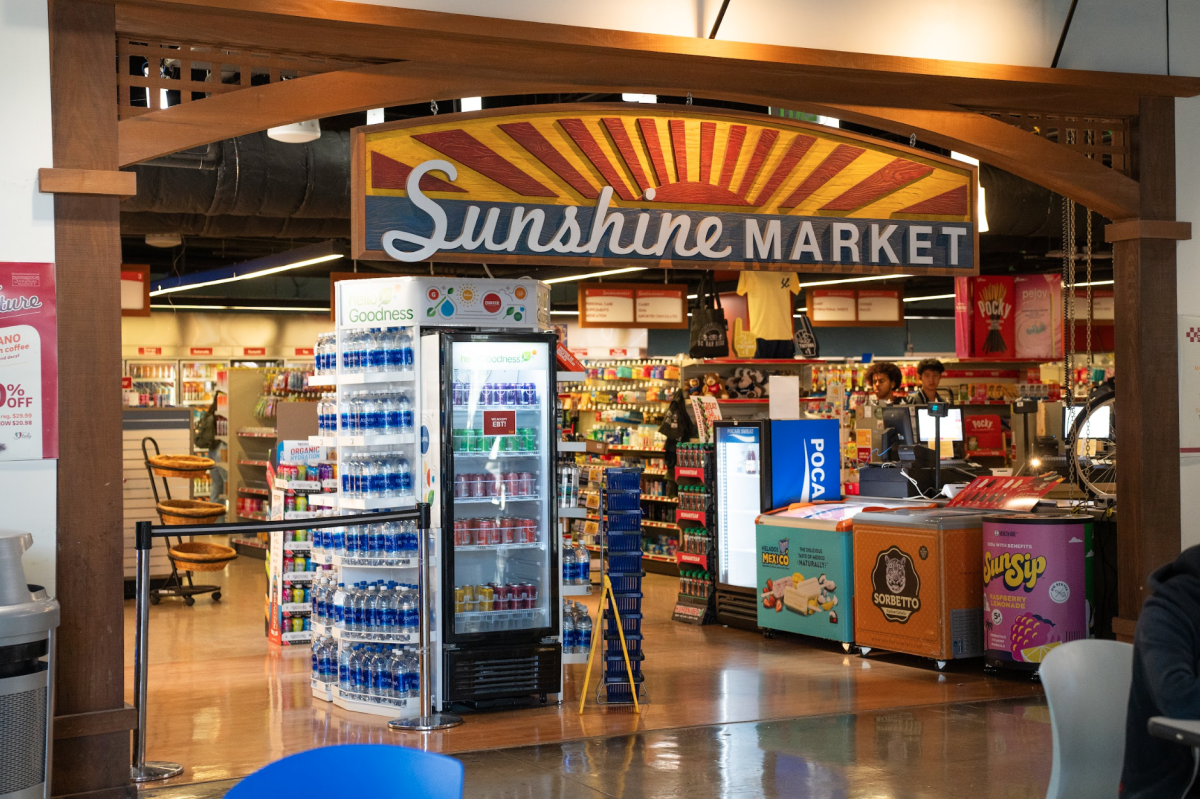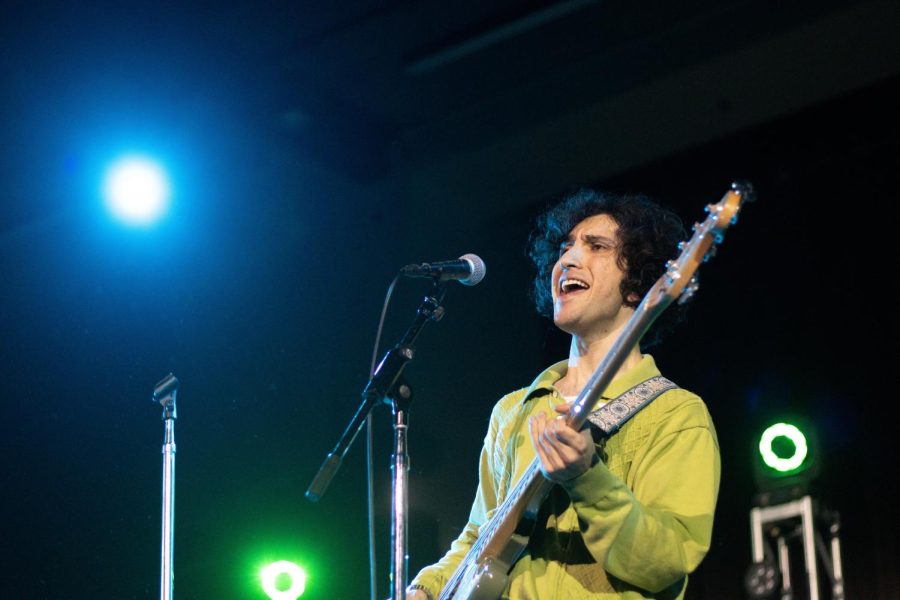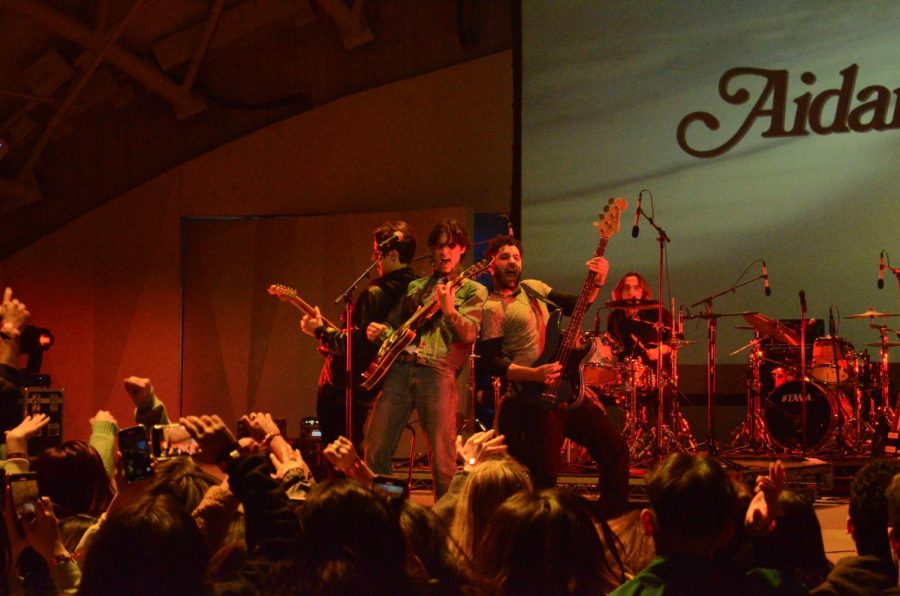You know what really grinds my gears? When you can’t find the parking space you’re looking for. And it seems most UCSD commuters would agree.
It’s no great secret that conveniently located “S” spots are a rarity. Between 10 a.m. and 2 p.m., “S” spots at all six college lots are filled to capacity, according to the 2006 survey conducted by UCSD’s Transportation and Parking Services — and almost any UCSD driver. The parking structures are no better: Undergraduate spaces in both Gilman and Roosevelt’s Pangea structures are 100 percent full during peak hours, the survey found.
It may be surprising, then, that even during peak hours there are hundreds upon hundreds of “S” spots available. They just happen to be in the Regents and East lots in UCSD’s east campus, the far-off and probably mythical land on the east side of Interstate 5. And there these spots sit, largely unused.
There’s a free shuttle that runs from the Regents and East lots to the main campus (every three to 10 minutes); and La Jolla’s consistently gorgeous weather practically begs for you to walk to class. But despite these conveniences, the outlying lots are underutilized because, frankly, few people want to pay $504 for a permit to park in the middle of nowhere.
And that’s why a new, two-tiered permit system might help reduce transportation headaches for everyone.
Stanford University, for instance, has a two-tier permit system for commuters. The first type of permit allows users to park in all lots, so drivers can choose the lot most convenient for them. The second type of permit allows drivers to park only in designated “remote” lots that are generally far away from campus buildings — and it costs about 60 percent less.
A similar system at UCSD might make our own remote lots much more attractive to undergraduate commuters. Instead of issuing a blanket “S” permit, why not create a second type of permit (perhaps “T”) that costs less but allows drivers to park only in the East and Regents lots?
Assuming the new permits don’t simply cannibalize current “S” permit sales, filling the currently unused “S” spots in east campus — which number well over 800 even during peak hours — would create more revenue for T&PS, which would be a good thing for UCSD commuters. Because of funding restrictions imposed by the 1960 University Master Plan, UC schools are unable to use state or university money to pay for auxiliary services like parking and housing. As a result, parking services rely on their own revenue to pay for new projects — like parking structures and improvements to the Cityshuttle program.
“Parking fees have to cover current operating costs and also the costs of the debt incurred when we build new parking structures, which is like the cost of your home mortgage,” T&PS Director of Planning and Analysis Greg Snee said in an interview. “A parking structure that costs $10 million to build will wind up costing $22 million once you pay off the debt.”
If used to pay down existing or future debt, parking revenue from the sale of additional permits can reduce construction costs significantly by reducing the amount of money spent on interest payments — which increases the likelihood that much-needed parking structures can be built.
The 2006 parking data also reveal what most UCSD drivers already know: Undergraduate lots are often full even during off-peak hours. As late as 5 p.m., “S” spots in the six college lots are over 90 percent full, suggesting that on-campus residents take up a significant portion of near-campus parking spaces. Many embittered commuters shake their fists at the roughly 2,200 permit-holding campus residents, arguing that students who live near their classes and use their cars only sporadically should not be allowed to park on campus. Indeed, many universities prohibit freshmen from bringing cars, and as UCSD’s population increases we may see similar restrictions here. But given the number of empty spaces in the east lots, these limitations seem unnecessary. Restricting on-campus drivers to “T” lots (perhaps only during daylight hours) would allow UCSD residents to keep their cars, while freeing up near-campus spaces for everyday users.
Obviously, a two-tier permit system would need to be fine-tuned to accommodate UCSD’s particular demands. How much are students willing to pay for a remote-lot-only permit? Would selling “T” permits transfer students from “S” lots, or would it simply fill up both types of lot? The answers to these questions will define how such a system would or would not work at UCSD.
— Nathan Miklos
Senior Staff Writer
The parking problem is a simple expression of economics: The demand for parking spots exceeds the supply. To achieve the economist’s orgasm (that is, balanced supply and demand), we must either raise supply or lower demand.
We could raise supply by building more parking lots and structures, but paving green fields or constructing towering concrete eyesores would tarnish our beautiful campus. Additionally, the hefty costs and the possibility of construction going to waste (the east campus lots) make increasing the supply unappealing.
We could lower demand by unleashing wave-after-wave of voracious signature-gatherers and insult comics across the parking lots, making the spaces less desirable, or we could reduce demand in more practical way: raising the price. Alas, this notion offends the part of my brain which abhors the idea of parking lots reserved for rich snobs. But as ugly as it is, this is most pragmatic way to balance supply and demand.
By raising the annual permit cost to, say, $800, those who are willing to pay more for the privilege of parking would do so, while those who do not receive sufficient utility (satisfaction) from parking to pay that much would switch to public transportation, carpooling or permit-sharing. Those in the latter category will find alternative transportation, thus relieving demand and achieving its balance with the supply.
A two-tiered system may not provide enough incentive for students to park in the boonies, and unlike raising permit costs, it might not generate additional revenue with which to increase the parking spot supply in the future. This solution of raising prices isn’t going to win the hearts of most students, but in the end, rose-colored glasses can be most uncomfortable.
— David Johnston
Staff Writer
Improving the parking situation for all is bound to require pain for some. Fortunately, there are simpler solutions to parking than paving over the campus until it resembles Los Angeles.
First of all, on-campus residents should be dissuaded from buying permits and fleeing campus on weekends — especially freshmen, whose reliable presence on evenings and weekends would feed into a more vital campus social life. In 2001, UCSD’s Transportation Policy Committee estimated that between 30 and 40 percent of resident students park on campus and purchase monthly, quarterly or yearly student permits. RAs and HAs have reason to use their cars (to run to Costco to buy food for their residents), but UCSD freshmen do not — or should not. The mass exodus on weekends only creates the dullness that freshmen complain about.
Explicitly barring campus-dwellers from buying parking permits isn’t necessarily called for; letting them only buy a permit that would let them park in a distant lot would make sense, because they use their cars only rarely compared to everyday commuters. Alternatively, the price of a permit could be simply raised for campus residents compared to commuters. Commuters have a concrete and daily need for a permit, while campus residents do not, and should be encouraged to share rides with suitemates.
For a two-pronged solution, public transportation and biking to school must be encouraged among short-distance commuters. The TPC stated, “At least 42% of students and 11% of employees live within a defined transit line located within the free zone; however, less than 3% use public transportation.” Part of the reason must be that Cityshuttles are somewhat unreliable, as they are often filled to capacity, while city buses are slow, inconvenient and definitely unreliable. Not much can be done about the dismal city buses, but Cityshuttle service can always be improved. At present, for example, they are full during peak commuting hours, while they run empty or near-empty late into the night. Small adjustments to service could make them more available when students need them.
And what of biking to school? Within a two-mile radius of campus live “7,000 students (3,150 currently driving alone) and 1,000 employees while only about 500 people use bicycles to commute to UCSD,” the TPC reports. Why save the workout for RIMAC when some light exercise can be as simple as biking to school? Think of the money saved by not buying a parking permit — and the time saved, considering that trolling for a parking space can easily top 20 minutes.
Lastly, carpooling is not just for freshmen with the foresight to leave their cars in Orange County. Complexes like Costa Verde and La Regencia are crowded with students, and no one living there has much of a reason to drive alone to school when arranging to carpool with a fellow UCSD student is a simple matter. Likewise, freshmen can easily arrange to carpool to Orange County or Los Angeles with their suitemates or friends, rather than each buying permits and crowding campus parking lots with their little-used cars.
UCSD students tend to have a single-minded, narrow view when it comes to parking. “I’m driving, and fuck everyone else,” is the mentality. Many of us pay premiums to live close to campus, only to commute just like those coming from more remote areas. Thus, a multipronged approach — selling discounted permits for remote lots only, encouraging carpooling and biking, improving public transportation to campus and dissuading campus residents from crowding the lots — might bring forth the necessary sea change.
— Marianne Madden
Opinion Editor







